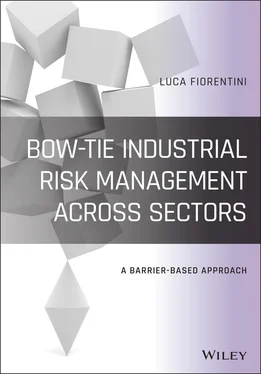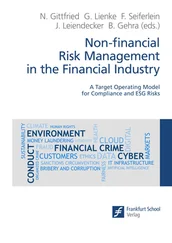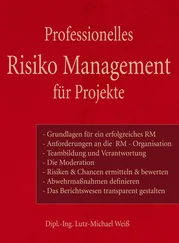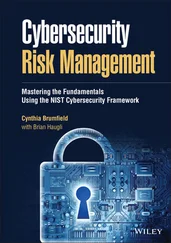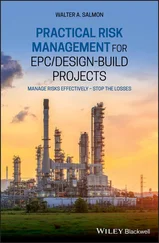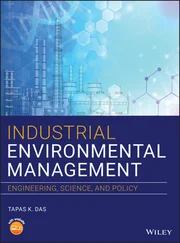Luca Fiorentini - Bow-Tie Industrial Risk Management Across Sectors
Здесь есть возможность читать онлайн «Luca Fiorentini - Bow-Tie Industrial Risk Management Across Sectors» — ознакомительный отрывок электронной книги совершенно бесплатно, а после прочтения отрывка купить полную версию. В некоторых случаях можно слушать аудио, скачать через торрент в формате fb2 и присутствует краткое содержание. Жанр: unrecognised, на английском языке. Описание произведения, (предисловие) а так же отзывы посетителей доступны на портале библиотеки ЛибКат.
- Название:Bow-Tie Industrial Risk Management Across Sectors
- Автор:
- Жанр:
- Год:неизвестен
- ISBN:нет данных
- Рейтинг книги:4 / 5. Голосов: 1
-
Избранное:Добавить в избранное
- Отзывы:
-
Ваша оценка:
- 80
- 1
- 2
- 3
- 4
- 5
Bow-Tie Industrial Risk Management Across Sectors: краткое содержание, описание и аннотация
Предлагаем к чтению аннотацию, описание, краткое содержание или предисловие (зависит от того, что написал сам автор книги «Bow-Tie Industrial Risk Management Across Sectors»). Если вы не нашли необходимую информацию о книге — напишите в комментариях, мы постараемся отыскать её.
Explore an approachable but rigorous treatment of systematic barrier-based approaches to risk management and failure analysis Bow-Tie Industrial Risk Management Across Sectors: A Barrier-Based Approach
Bow-Tie Industrial Risk Management Across Sectors
Bow-Tie Industrial Risk Management Across Sectors: A Barrier-Based Approach
Bow-Tie Industrial Risk Management Across Sectors — читать онлайн ознакомительный отрывок
Ниже представлен текст книги, разбитый по страницам. Система сохранения места последней прочитанной страницы, позволяет с удобством читать онлайн бесплатно книгу «Bow-Tie Industrial Risk Management Across Sectors», без необходимости каждый раз заново искать на чём Вы остановились. Поставьте закладку, и сможете в любой момент перейти на страницу, на которой закончили чтение.
Интервал:
Закладка:
Table 29 Threshold values according to Italian regulations. Source : Marmo, Piccinini and Fiorentini, 2013.
Table 30 Summary of the investigation.
Table 31 Example of calculating HEP with the SPAR‐H Method.
Table 32 PIF (current configuration)
Table 33 PIF (Configuration A)
Table 34 PIF (POST configuration)
Table 35 Frequency of incidental assumptions considered.
List of Acronyms
AHJauthority having jurisdictionAIChEAmerican Institute of Chemical EngineersALARPas low as reasonably practicableBCMbusiness continuity managementBCMSBusiness Continuity Management SystemBFAbarrier failure analysisBIAbusiness impact analysisBPCSbasic process control systemBRFbasic risk factorBSCATbarrier‐based systematic cause analysis techniqueBTBow‐TieCCDcause‐consequence diagramCCPSCentre for Chemical Process SafetyCOSOCommittee of Sponsoring Organizations of the Treadway CommissionERMenterprise risk managementETAevent tree analysisFARSIfunctionality, availability, reliability, survivability and interactionsFMEAfailure modes and effects analysisFMECAfailure modes, effects, and criticality analysisFMEDAfailure modes, effects, and diagnostic analysisFSMSfire safety management systemFTAfault tree analysisGAMABglobally at least as goodGIGOgarbage in, garbage outHAZIDhazard identificationHAZOPhazard and operability analysisHEARThuman error assessment and reduction techniqueHEMPhazard and effects management processHEPhuman error probabilityHFACShuman factors analysis and classification schemeHLShigh‐level systemHSEhealth, safety, and environmentHSEQhealth, safety, environment, and qualityICTinformation and communications technologyIEinitial eventIECInternational Electrotechnical CommissionIEFinitial event frequencyIPLindividual protection layerIRMThe Institute of Risk ManagementIRPAindividual risk per annumIRTindependent protection layer response timeISOInternational Organization for StandardizationITinformation technologyKPIkey performance indicatorLFElearning from experienceLOPAlayer of protection analysisLOPCloss of primary containmentMEMminimum endogenous mortalityMGSat least the same level of safetyMOCmanagement of changeNFPANational Fire Protection AssociationNMAUnot more than unavoidablePDCAPlan‐Do‐Check‐ActP&IDpiping and instrumentation diagramPFDprobability of failure on demandPHApreliminary hazard analysisPIFperformance‐influencing factorPPEpersonal protective equipmentPSMprocess safety managementQIQOquality in, quality outQRAquantitative risk assessmentRArisk assessmentRAGAGEPrecognized and generally accepted good engineering practiceRBDreliability block diagramRCAroot cause analysisRMrisk managementROIreturn on investmentRPNrisk priority numberRRFrisk‐reducing factorSCEsafety critical equipmentSHIPPsystem hazard identification, prediction and preventionSIFsafety instrumented functionSILsafety integrity levelSISsafety instrumented systemSLCsafety life cycleSLIMSuccess Likelihood Index MethodSMSsafety management systemSPAR‐HStandardized Plant Analysis Risk‐Human Reliability AnalysisTHERPtechnique for human error‐rate predictionTRtechnical report
Preface 1
Riccardo Ghini
Quality Head Italy & Malta and South Europe Cluster, Sanofi
Risk assessment is a basic concept that has always accompanied me throughout my work and professional experience, so being able to contribute, albeit marginally, to the drafting of this monumental work fills me with pride and happiness.
Since the time of Legislative Decree 626/94, the ability to evaluate the probability of occurrence and the possible consequences of accidents and injuries at work has been a fundamental skill for me to develop, through the study of ever‐more‐refined methods and techniques of investigation. Finding all these useful analysis tools grouped in this way, brilliantly described and accompanied by real application examples, represents for me, and for all professionals, a unique opportunity for enrichment and deepening.
In fact, as my career continued, I soon realized how the concepts underlying this book can be effectively applied, not only in the field of work safety, but also in all areas of business activity, where words like “risk,” “scenario,” “analysis of the causes,” and “continuous improvement” have become commonly used, as they are based on the very structure of the management systems developed in accordance with the various reference standards, now completely standardized.
Furthermore, we mustn’t fail to mention the importance assumed by the methods of analysis, assessment, and operational management of the risks associated with the predicate offenses of Legislative Decree 231/2001 (administrative liability of companies and entities), which constitute the essential element in the preparation of a Corporate Organization, Management, and Control Model that effectively prevents the occurrence of the types of offense and, at the same time, constitutes a valid exemption in the context of a possible criminal trial.
The real cultural transition, however, takes place when the concept of risk assessment is adopted and is also applied outside the professional sphere, elevating it to a rational criterion to guide our daily choices: “do I overtake or not overtake the car that’s in front of me?, “do I subscribe to this insurance policy or not?,” “do I vaccinate my children or not?” These are all questions and situations we face every day, and for which it is very useful to identify the possible “top event,” the “consequences” that can be generated, and the “causes” that can originate it, as well as to know what “barriers” we can implement in our defence.
This book is therefore much more than a scientific text for a few super‐technicians and experts; it is a concrete and useful reference to all, to bring order and reasoning into our decisions, whatever they may be, in a world increasingly dominated by superficiality and disinformation.
I would also like to underline another aspect, often not adequately communicated: the concept of risk not only with a negative meaning, as a threat or weighting of an unfavourable event, but also, from the perspective of ISO 31000, as a positive deviation from the result expected, therefore, as an opportunity, to be evaluated and seized for the development of the organization. A better understanding of this dimension of risk would certainly facilitate a wider and more extensive use of the methodologies illustrated in the book.
At this point, before diving into reading and studying, I just have to applaud the authors, who represent all‐Italian excellence, similar to Ferrari and Parmigiano Reggiano, in this scientific field traditionally the prerogative of Anglo‐Saxon and American schools, and of which we must all be proud.
Preface 2
Bernardino Chiaia
Head of SISCON (Safety of Infrastructures and Constructions), Politecnico di Torino
The number and the magnitude of accidents worldwide in the industrial sector and in the realm of civil and transportation infrastructures has risen since the 1970s and continues to grow both in frequency and socioeconomic impact. Several major accidents in the industrial sector (see, e.g., the Seveso chemical plant disaster in 1976, the Bhopal gas tragedy in 1984, the Chernobyl nuclear accident in 1986, the Deepwater Horizon oil spill in 2010, the explosion in Warehouse 12 at the Port of Beirut in 2020) have been under the lens of the United Nations Office for Disaster Risk Reduction (UNISDR), which puts great effort in developing safety guidelines within the Sendai Framework for Disaster Risk Reduction 2015–2030.
At the same time, the number of infrastructure failures in developed countries rose dramatically since the beginning of the new millennium. This is partly due to ageing and poor maintenance of bridges, viaducts, tunnels, and dams, which were constructed mainly in the first 35 years after World War II. Moreover, traffic loads and required performances have increased 20 times the original design conditions. On the other hand, in underdeveloped countries there is clear evidence that industrial regulations are less strict and that a general lack of a culture of safety generally results in looser applications of the rules, thus producing a physiological higher percentage of accidents.
Читать дальшеИнтервал:
Закладка:
Похожие книги на «Bow-Tie Industrial Risk Management Across Sectors»
Представляем Вашему вниманию похожие книги на «Bow-Tie Industrial Risk Management Across Sectors» списком для выбора. Мы отобрали схожую по названию и смыслу литературу в надежде предоставить читателям больше вариантов отыскать новые, интересные, ещё непрочитанные произведения.
Обсуждение, отзывы о книге «Bow-Tie Industrial Risk Management Across Sectors» и просто собственные мнения читателей. Оставьте ваши комментарии, напишите, что Вы думаете о произведении, его смысле или главных героях. Укажите что конкретно понравилось, а что нет, и почему Вы так считаете.
